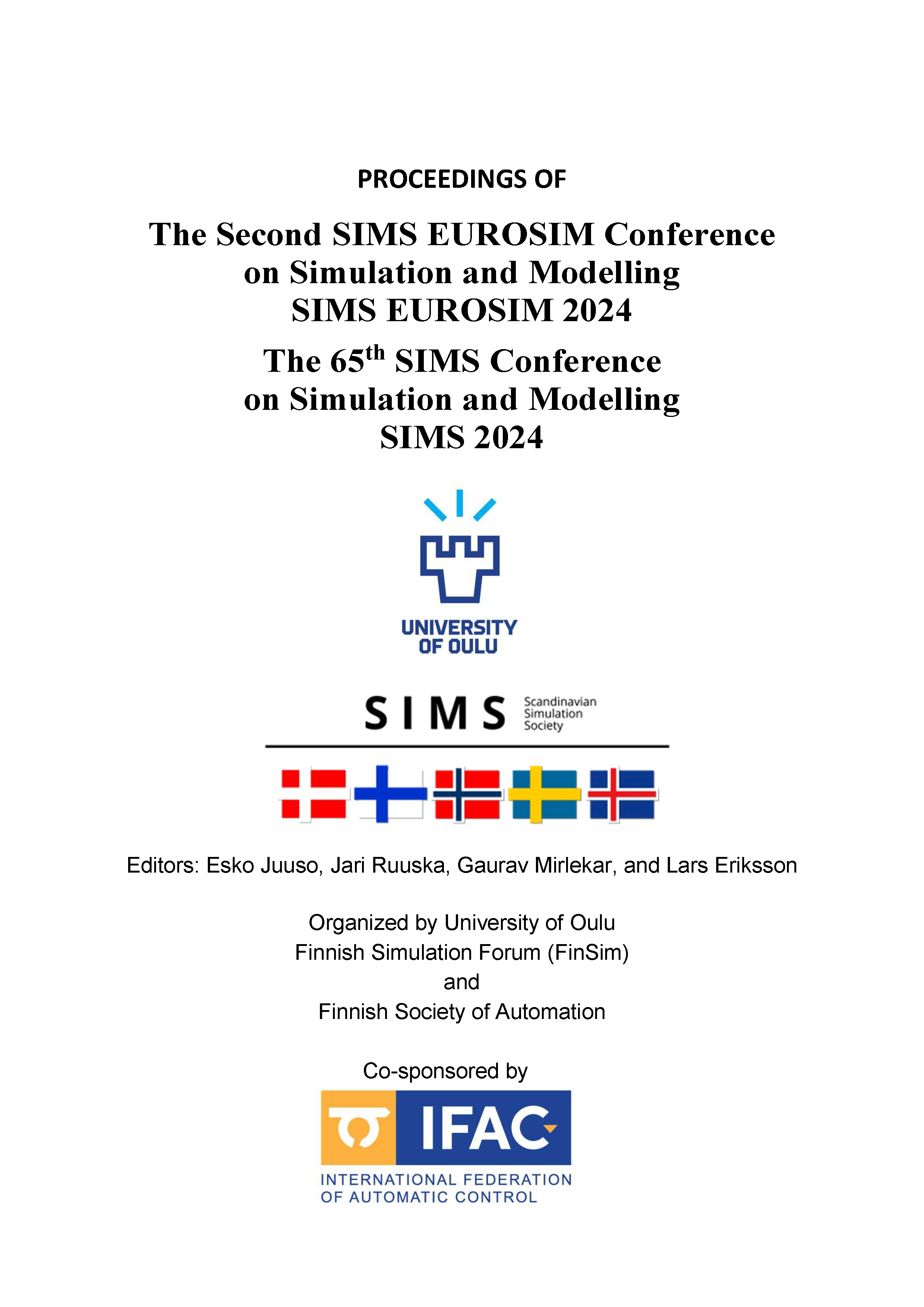Model Predictive Control for Integrated Photovoltaic (PV) and Electrolysers System
DOI:
https://doi.org/10.3384/ecp212.050Keywords:
Advance process control, Energy systems, Process simulation, Process modelingAbstract
The European Union (EU) has set an ambitious target to reach carbon neutrality by 2050, prompting industries to develop roadmaps to achieve this goal. In this context, hydrogen and hydrogen-based fuels play a crucial role in achieving net-zero emissions. Instead of relying on hydrogen production from steam reforming natural gas systems, electrolysers offer a sustainable alternative to address climate and energy challenges. The integration of solar energy systems with electrolysers can further diminish carbon emissions and enhance sustainability. Typically, these processes are simulated using process simulation software platforms that employ first-principle models based on the mass and energy balances within the system. The adoption of Model Predictive Control (MPC) algorithms not only benefit from improves advance control methods and optimization but also facilitates the automation and efficient operation of these processes. This study aims to mathematically model and simulate an integrated photovoltaic (PV) and Proton Exchange Membrane (PEM) water electrolyser system for hydrogen production. Additionally, it assesses the impact of MPC algorithms on the system's efficiency. The study undertakes modeling of PV systems incorporating a maximum power point tracking algorithm to capitalize on optimal power generation and ensure a consistent direct current supply to the electrolysers. Mathematical modeling of PEM water electrolysers is performed to establish the current-voltage curve in steady-state mode and to assess water and gas permeability through the membrane in dynamic mode. Finally, the study identifies input variables, such as electrolyser temperature, and evaluates their effects on key indicators like system efficiency through performance analysis.Downloads
Published
2025-01-13
Issue
Section
Papers
License
Copyright (c) 2025 Ali Reza Pirouzfar, Sambeet Mishra, Gaurav Mirlekar, Koteswara Rao Putta

This work is licensed under a Creative Commons Attribution 4.0 International License.

